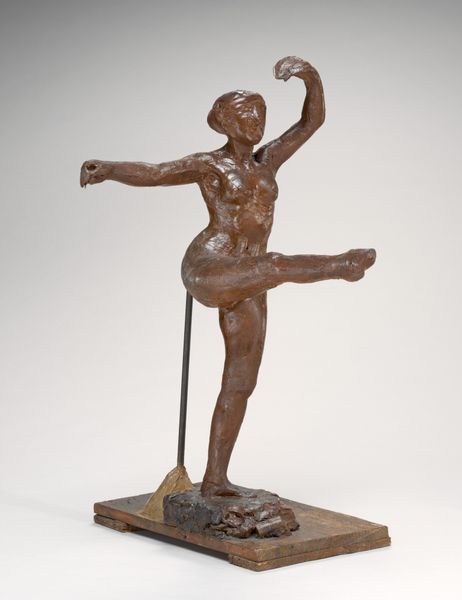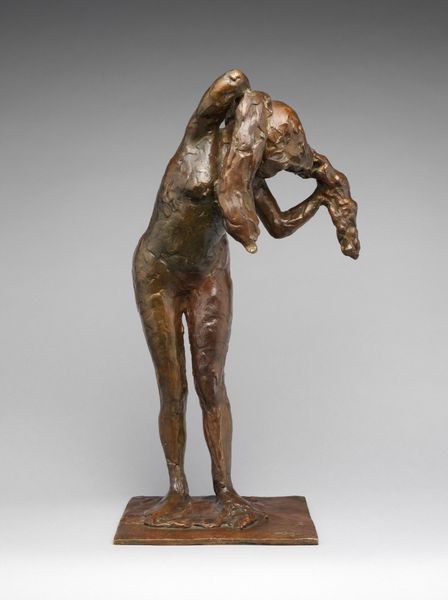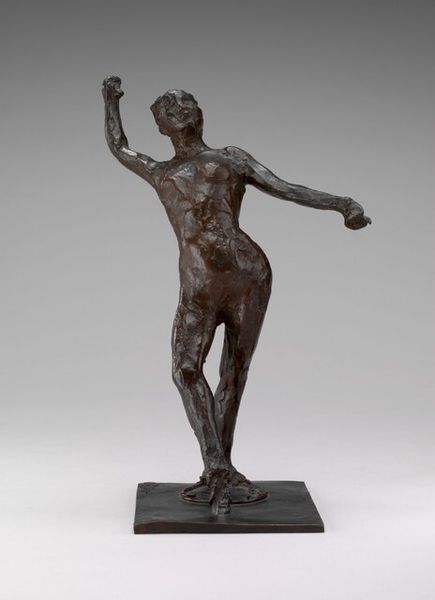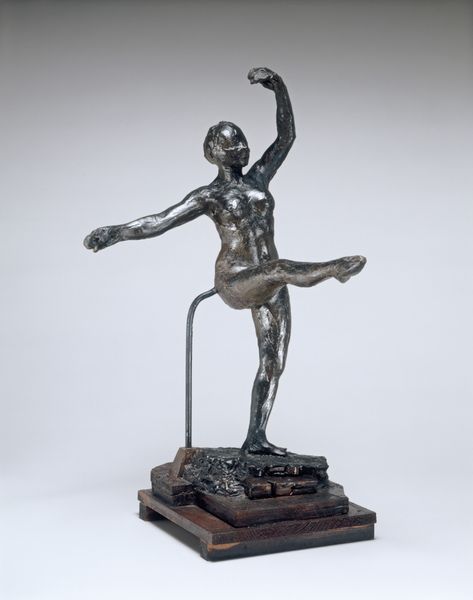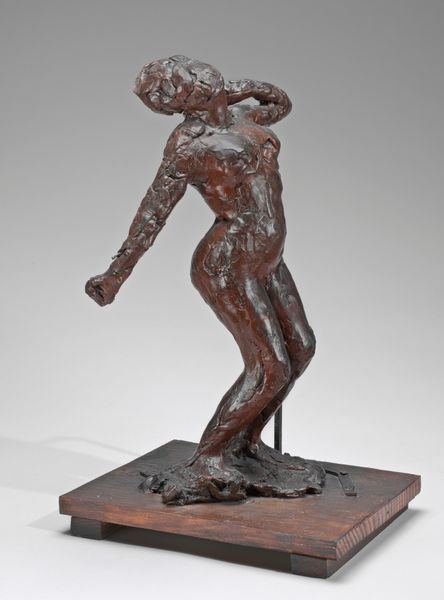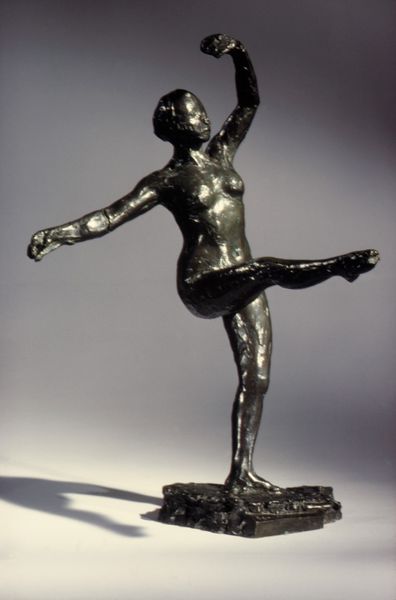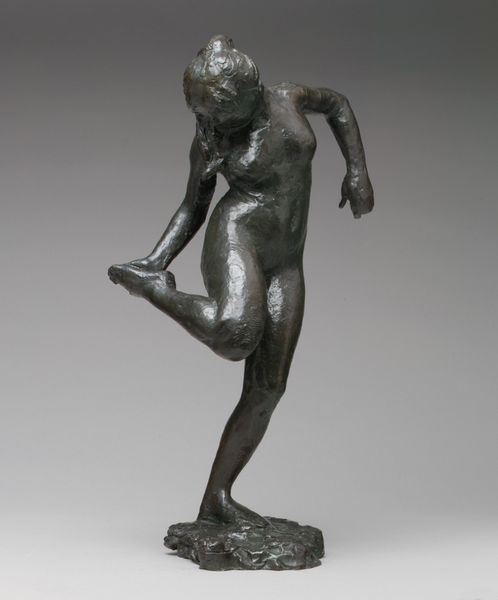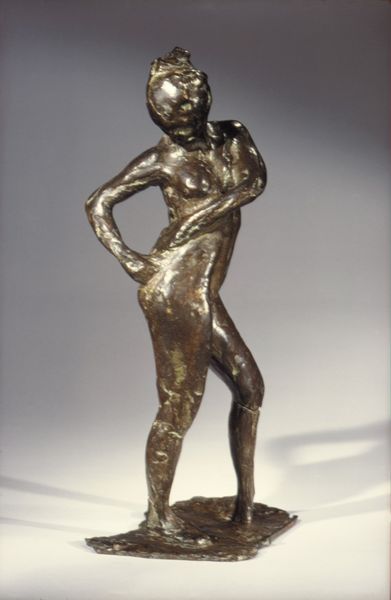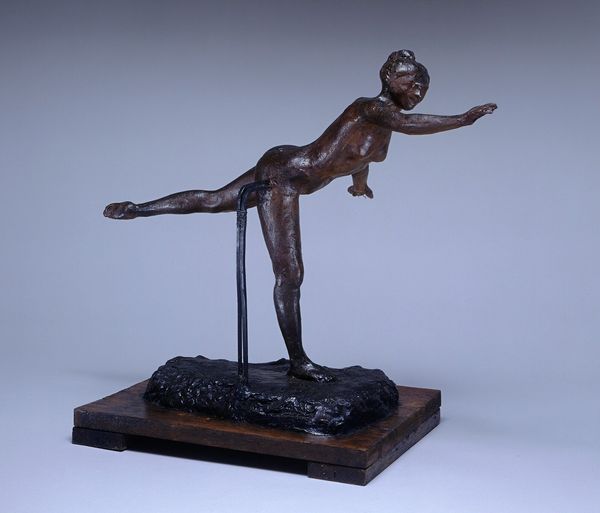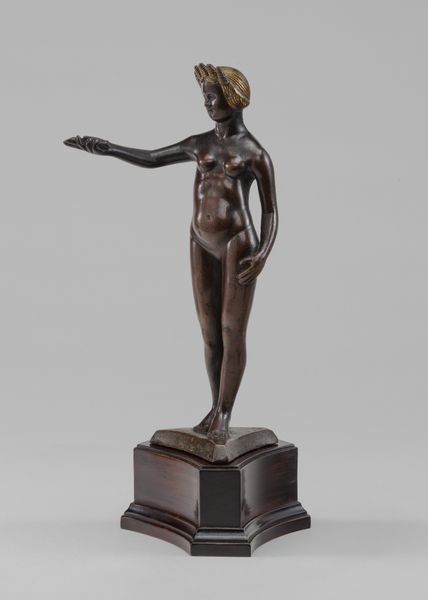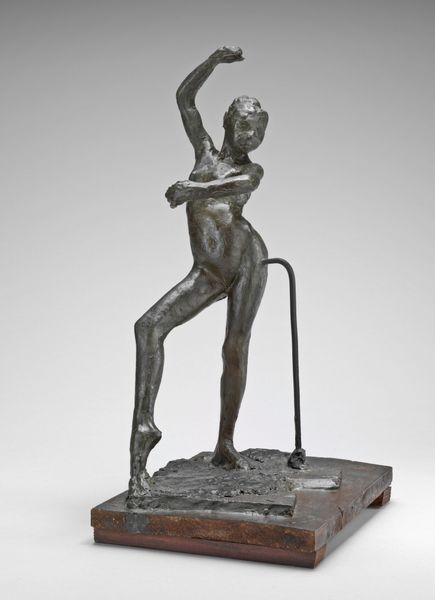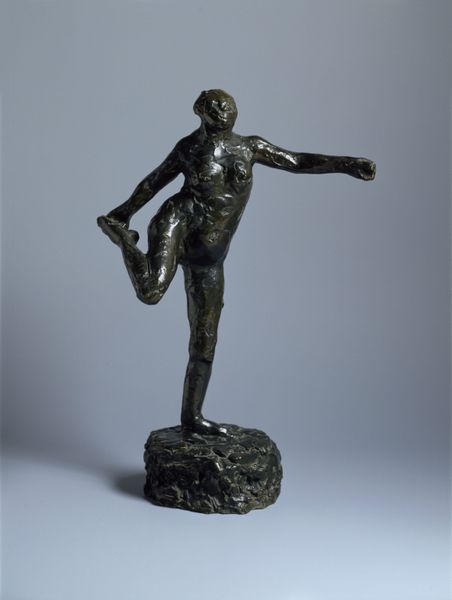
bronze, sculpture
#
impressionism
#
sculpture
#
bronze
#
figuration
#
sculpture
#
nude
Dimensions: overall without base: 21.8 x 14.4 x 9.3 cm (8 9/16 x 5 11/16 x 3 11/16 in.)
Copyright: National Gallery of Art: CC0 1.0
Editor: This bronze sculpture, "Dancer Bowing (The Curtain Call)" by Edgar Degas, from the late 19th century, really captures a sense of movement and almost fleeting grace. What strikes me most is the texture of the bronze; it seems to highlight the labor involved in creating the piece. What's your interpretation of this sculpture? Curator: The materiality is key, isn't it? The bronze itself – its sourcing, the casting process. Think about the foundries Degas would have employed. Were these mass production, churning out multiples for bourgeois consumers? Or more specialized workshops? How does that affect our understanding of this dancer, this supposed symbol of ethereal beauty? The texture you noticed, the visible traces of the artist's hand – it disrupts that ideal, brings the labor, the physical making, to the forefront. How does that clash with the expectations of the dance itself as a leisure activity, a form of high culture? Editor: That’s a great point! It definitely clashes with the idealised image of ballet. It makes you think about the physical effort and discipline involved in becoming a dancer, which wasn't really shown. The means of production challenge the traditional view. It sounds like Degas questioned what was consumed by the public in ballet. Curator: Exactly! It is about showing the material base upon which culture and beauty are made. We need to investigate that complex web of labor and consumption. Consider Degas’s other works as well. Were these for display only? Or used for preparatory study, and potentially the re-use of material to avoid any material waste? Editor: So, seeing the bronze not just as a medium, but also as a product of industrial processes, reveals hidden layers in the artwork. Curator: Precisely. And that's where the real richness of this work lies, beyond the superficial grace and into the realities of its creation and circulation. Editor: That makes me appreciate the piece even more!
Comments
No comments
Be the first to comment and join the conversation on the ultimate creative platform.
